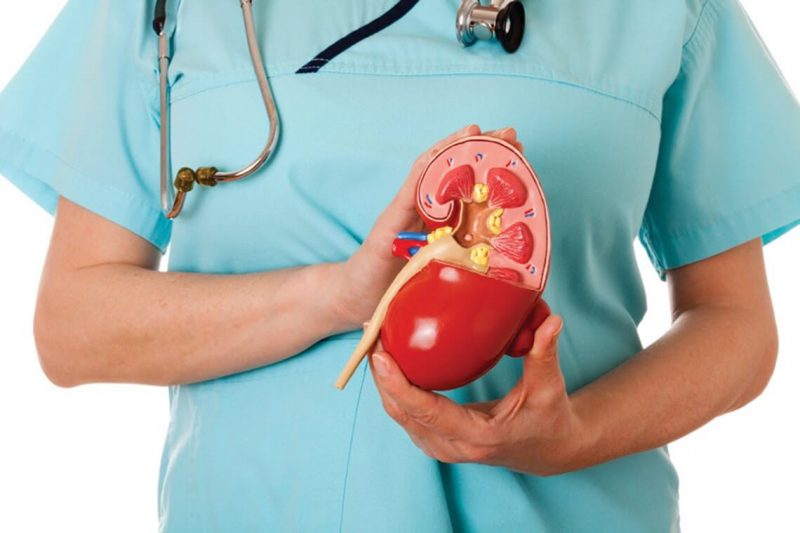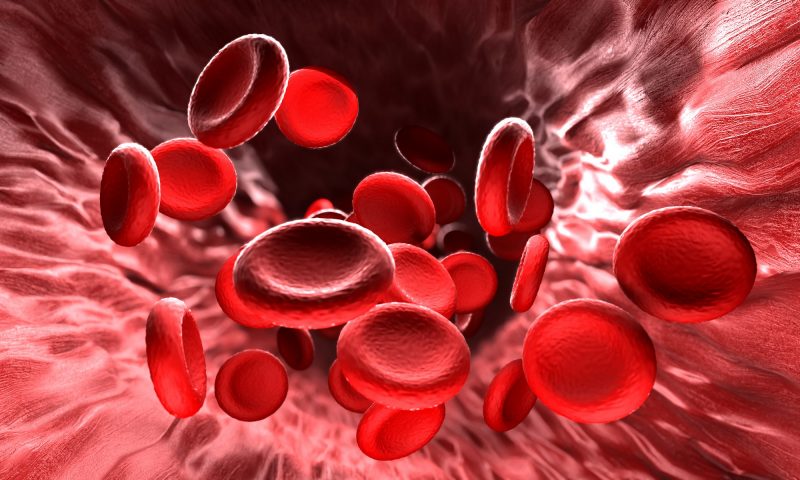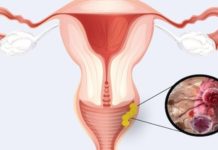The violation of the functionality of several physiological systems of a person is a serious pathology, identified by WHO as a separate syndrome. The complex changes that occur in this case in the body are classified as multiple organ failure. What is it and how to prevent the development of the disease, you will learn from an article prepared by our experts.
Material Content:
Multiple organ failure - what is it?
The syndrome of multiple organ failure is a complex pathological condition that occurs as a result of a nonspecific stress response of the body to acute critical conditions that occur after injuries, blood loss or infections.
A characteristic manifestation of the syndrome is the simultaneous defeat of several organs or systems, their loss of functionality and ability to provide the vital needs of the body.

About 80% of the total number of deaths in intensive care wards is attributable to multiple organ failure syndrome.
The term “multiple organ failure” arose in the mid-70s of the last century. Nevertheless, the final conclusions about the characteristic features of the pathological condition, as well as about the possible causes of its development, were made by scientists only ten years later.
Today, organ failure is regarded as the universal basis for the development of a critical level of any physiological processes.In this case, the severity of the disease is determined by the presence of the potential ability of the body to resist pathogenic factors.
ICD-10 disease code
According to the International Classification of Diseases, multiple organ failure cannot have a separate code, since its manifestations are associated with different physiological systems.
Thus, the classification of the disease is a collective system, correlated with codes characterizing lesions of specific organs.
Clinical picture
Multiple organ failure syndrome is characterized by a phased development. Due to severe systemic damage, metabolic processes slow down sharply, provoking dysfunctions and structural disorders of organs.
Against the background of acute violations of gas exchange, during the day, the failure of most internal organs, as well as the circulatory system and hemostasis, develops. Along with this, pathological changes occur in organs that support adaptation mechanisms.

Disease mediators form a generalized systemic response, which is characterized by:
- an increase in body temperature of more than 38 ° C or less than 36 ° C;
- reducing the voltage of carbon dioxide in the blood to 32 mm RT. st .;
- heart rate increase of more than 90 beats per minute;
- the level of respiratory rate increases to 20 or more movements per minute;
- there is a change in the cellular composition of the blood - an increase in the number of leukocytes over 129 / l, or a decrease in the number of leukocytes to 49 / l.
As the disease develops, due to inhibition of immunoglobulin synthesis, immune reactions decrease, septic processes occur, and heart failure develops.
The cause of the disease
Multiple organ failure develops against the background of pathofunctional changes in physiological systems and organs due to injuries or the acute form of a disease.
Among the reasons contributing to the development of pathology, there can be any extreme conditions that cause a severe stress reaction of the body.

The following causes of multiple organ failure are distinguished:
- life-threatening injuries and damage;
- ulcerative formations;
- complex forms of infectious lesions;
- massive blood loss;
- poisoning, toxic shock;
- diabetes complications;
- eclampsia;
- asystole;
- hemorrhagic shock;
- coma;
- HIV
- sepsis;
- consequences of chemotherapy;
- blood transfusion with an inappropriate Rh factor or group.
Most often, the primary infectious foci are purulent processes in the lungs and peritonitis.
There are also etiological factors under the influence of which a predisposition to systemic diseases is formed - alcoholism and smoking, long-term use of steroids, the use of cytostatic drugs, unbalanced nutrition.
The listed factors should not be regarded as a 100% basis for the development of multiple organ failure - the disease always occurs in the presence of certain conditions, for example, a decrease in the body's defenses.
Symptoms of the disease
Signs indicative of the development of multiple organ failure vary, depending on the stage of development of the disease, the type and number of affected organs and systems, as well as the presence of concomitant factors.

The primary symptoms of the syndrome are manifested in the form of a general malaise, accompanied by:
- respiratory distress;
- shortness of breath
- increased or slowed heart rate;
- pallor of the skin;
- feeling of cold in the limbs;
- yellowness sclera;
- difficulty and soreness of digestion;
- bruising.
Many signs of multiple organ failure syndrome are correlated with affected organs.
Pathological foci in the lungs are manifested by shortness of breath and respiratory distress syndrome. Impaired renal function is accompanied by changes in the results of a general urine test.With liver damage, the level of bilirubin in the blood rises, jaundice is diagnosed.
Thrombocytopenia and other abnormalities in the blood test are regarded as a sign of a violation of the hemostatic system. The development of hypotension with a decrease in cardiac index and ventricular arrhythmia is considered a sign of acute heart failure, characteristic of heart damage in multiple organ failure.
The defeat of the gastrointestinal tract is accompanied by the formation of a large number of ulcers on the surface of the gastric mucosa. Inhibition or vice versa, the appearance of acute psychoses is evidence of damage to the central nervous system
Development phases

The pathological processes accompanying the development of multiple organ failure syndrome go through three stages:
- induction - is characterized by the synthesis of biologically active substances, mediators, providing the launch of a systemic inflammatory response;
- cascade - is expressed in the uncontrollable development of acute lung injury syndrome, activation of the kinin-kallikreinovoy system and arachidonic acid metabolites, as well as a decrease in fibrinolysis and other functions of the hemostasis system;
- secondary autoaggression and a complete loss of support for homeostasis by the body.
In the form of the pathogenetic mechanism, two types of the course of multiple organ failure are distinguished.
- The first (single-phase) form of the disease is characterized by an acute progressive course of pathology. Within two days, a metabolic disorder occurs with the subsequent development of insufficiency of the kidneys, liver, central nervous system, heart, and hemostatic system. The pathological process is regarded as preceding a fatal outcome.
- The second pathogenetic form of the disease is characterized by a two-phase course. During the first phase, the patient's condition can temporarily stabilize - until the time of the attachment of infectious sepsis. And since the development of a subsequent septic infection takes several days, adequate resuscitation measures provided during this period can lead to recovery.
What is the danger of multiple organ failure?
Doctors consider multiple organ failure syndrome as a response of the body to severe pathological processes. Regardless of the etiological factor, the development of the disease is accompanied by a loss of functionality of all vital systems.

Along with pulmonary, renal and liver failure, there are:
- anemia;
- stressful ulcers of the stomach and intestines;
- insufficiency of subcellular structures - hypoxia, microcirculation disorder, lack of energy;
- circulatory disturbance;
- inhibition of the production of proteins and immunoglobulins;
- the use of amino acids instead of carbohydrates for energy production;
- violation of the barrier potential of the walls of the digestive tract;
- irreversible and fatal forms of hyperglycemia;
- thrombocytopenia;
- heart failure.
However, multiple organ failure syndrome is not considered an irreversible condition. Active treatment in accordance with resuscitation principles allows you to save the life of the patient, subject to modern diagnostics and therapy.
Disease prognosis
The severity of multiple organ failure is determined by the Multiple Organ Failure (MOF) scale, which involves the assessment of seven physiological systems - the respiratory, urinary, hematological, cardiovascular, as well as the digestive tract, liver and central nervous system.
The prognosis of a fatal outcome depends on the number of simultaneously affected organs. Violation of the functionality of the two organs leads to death in 30-40% of cases. If failure is diagnosed in three or more organs, the possibility of recovery is reduced to zero.
Treatment technique
To determine the multiple organ dysfunction, doctors use laboratory tests.The diagnosis is confirmed in the presence of simultaneously progressing signs - impaired hemostatic system, acute respiratory distress syndrome, renal dysfunction, hepatic dysfunction, decreased central nervous system functionality.

Management of patients and treatment of the disease occurs according to the following strategic principles:
- prevention of the development of a critical condition - timely elimination of infection and factors that triggered pathological processes, normalization of metabolic processes, restoration of respiration and blood circulation, tissue nutrition, prevention of necrosis;
- artificial maintenance or replacement of functionally insolvent systems, treatment of affected organs;
- blocking inflammatory mediators;
- providing detoxification;
- complex therapy of all components of multiple organ failure;
- application of minimally invasive methods of exposure.
In addition, the use of preventive measures in the management of severe patients who are potentially predisposed to the development of multiple organ failure is of great importance.
The duration of the course of complex therapy is from 7 to 20 days, depending on the degree of complexity of the disease.
Prevention Methods
Preventive measures are the best method of therapeutic tactics when choosing a method of therapeutic effect on critically ill patients. Especially dangerous are pathologies such as shock, coma, sepsis, trauma, blood loss, acute inflammatory forms.
Preventive measures include the diagnosis and elimination of pathological processes, as well as providing support for the body as a whole to prevent irreversible phenomena.
The effectiveness of the therapy depends on the timely detection of systemic dysfunctions, the adequacy of the assessment of the patient's condition and the level of the physiological reserve of his body.












